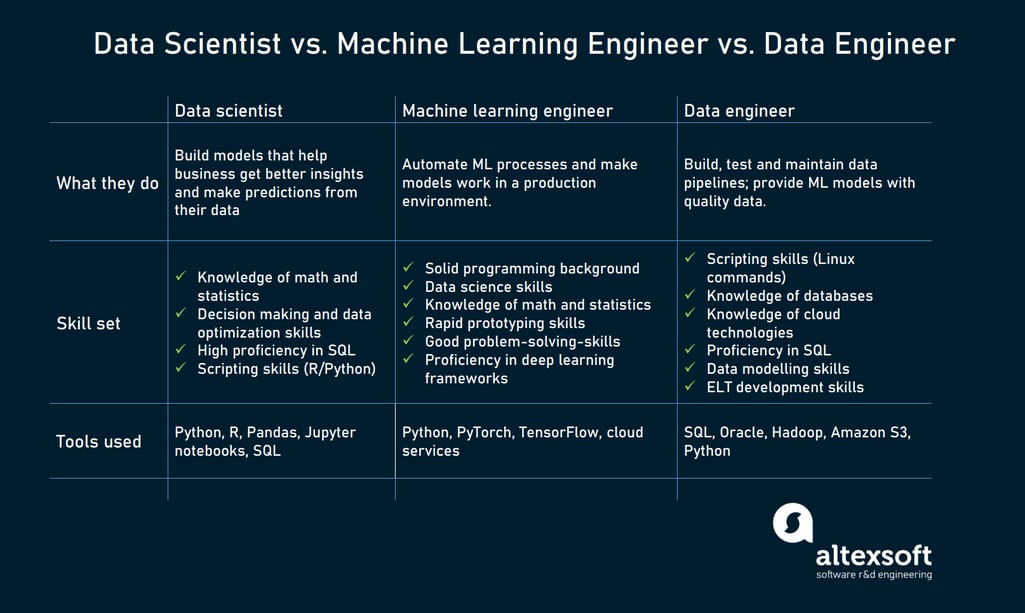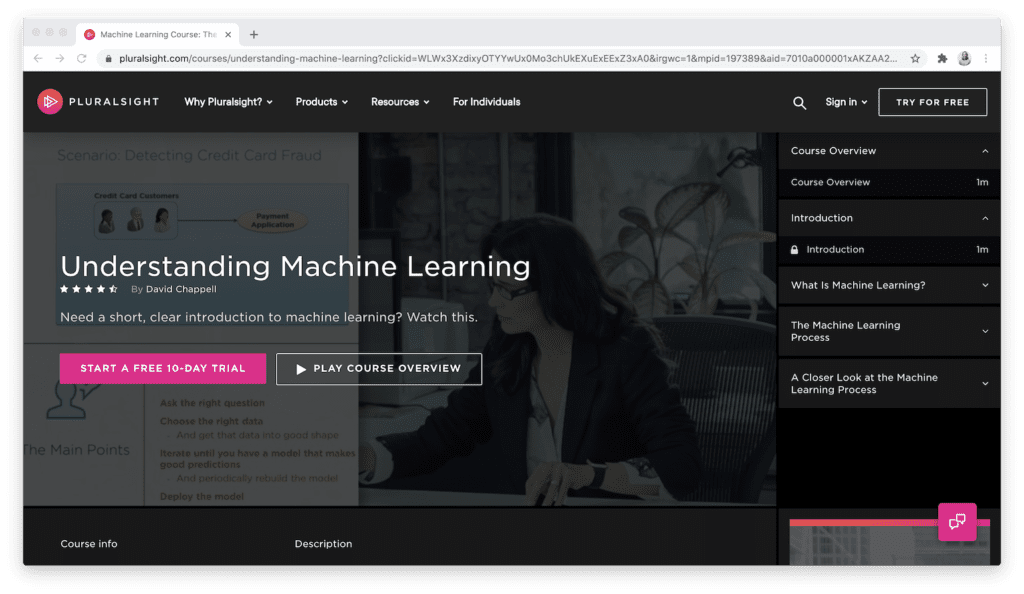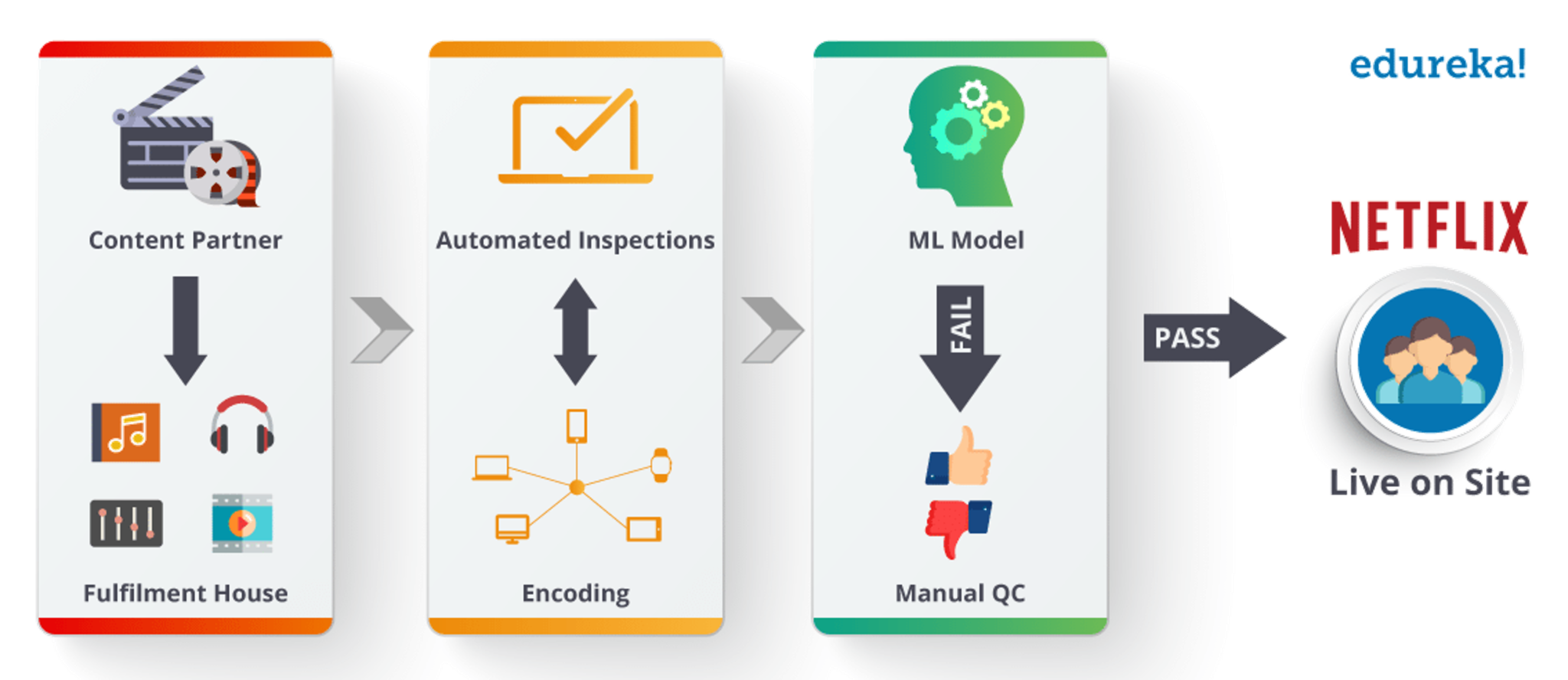All Categories
Featured
Table of Contents
- – Not known Details About Training For Ai Engine...
- – Indicators on Llms And Machine Learning For So...
- – Excitement About Embarking On A Self-taught M...
- – An Unbiased View of Online Machine Learning E...
- – The 8-Minute Rule for Machine Learning Engin...
- – All About 19 Machine Learning Bootcamps & Cl...
- – Getting The No Code Ai And Machine Learning:...
Some people believe that that's dishonesty. If someone else did it, I'm going to use what that person did. I'm compeling myself to believe via the possible solutions.
Dig a bit deeper in the mathematics at the beginning, just so I can construct that structure. Santiago: Lastly, lesson number seven. This is a quote. It says "You have to comprehend every information of a formula if you wish to utilize it." And after that I claim, "I assume this is bullshit guidance." I do not believe that you have to recognize the nuts and bolts of every algorithm prior to you utilize it.
I have actually been utilizing neural networks for the lengthiest time. I do have a sense of exactly how the slope descent works. I can not explain it to you right now. I would certainly need to go and examine back to in fact get a much better instinct. That doesn't suggest that I can not address things making use of semantic networks, right? (29:05) Santiago: Trying to force individuals to assume "Well, you're not mosting likely to succeed unless you can discuss each and every single information of just how this works." It returns to our arranging example I assume that's simply bullshit guidance.
As a designer, I have actually serviced numerous, lots of systems and I have actually used numerous, several points that I do not comprehend the nuts and bolts of exactly how it works, despite the fact that I comprehend the impact that they have. That's the last lesson on that string. Alexey: The amusing thing is when I consider all these libraries like Scikit-Learn the formulas they make use of inside to implement, for instance, logistic regression or something else, are not the exact same as the algorithms we research in artificial intelligence classes.
Not known Details About Training For Ai Engineers
Also if we tried to find out to get all these fundamentals of machine learning, at the end, the formulas that these collections make use of are various. ? (30:22) Santiago: Yeah, absolutely. I believe we need a whole lot much more materialism in the market. Make a great deal even more of an impact. Or focusing on delivering value and a little much less of purism.

Incidentally, there are two various paths. I normally talk to those that wish to work in the market that desire to have their impact there. There is a path for scientists and that is entirely different. I do not risk to discuss that due to the fact that I do not recognize.
Right there outside, in the industry, materialism goes a lengthy way for certain. (32:13) Alexey: We had a remark that said "Really feels more like inspirational speech than discussing transitioning." So perhaps we ought to switch. (32:40) Santiago: There you go, yeah. (32:48) Alexey: It is an excellent inspirational speech.
Indicators on Llms And Machine Learning For Software Engineers You Need To Know
One of the points I wanted to ask you. Initially, allow's cover a pair of things. Alexey: Allow's start with core tools and frameworks that you need to learn to really change.
I recognize Java. I understand how to utilize Git. Perhaps I know Docker.
Santiago: Yeah, definitely. I believe, number one, you must begin learning a little bit of Python. Since you already recognize Java, I do not assume it's going to be a significant transition for you.
Not due to the fact that Python is the same as Java, but in a week, you're gon na obtain a lot of the differences there. Santiago: Then you obtain specific core devices that are going to be made use of throughout your entire career.
Excitement About Embarking On A Self-taught Machine Learning Journey
You get SciKit Learn for the collection of equipment understanding formulas. Those are tools that you're going to have to be making use of. I do not advise just going and finding out concerning them out of the blue.
Take one of those courses that are going to start presenting you to some troubles and to some core ideas of device learning. I don't bear in mind the name, yet if you go to Kaggle, they have tutorials there for cost-free.
What's excellent regarding it is that the only requirement for you is to understand Python. They're mosting likely to provide a trouble and tell you just how to use choice trees to address that particular issue. I assume that procedure is incredibly effective, since you go from no device learning history, to comprehending what the problem is and why you can not solve it with what you understand today, which is straight software application engineering methods.
An Unbiased View of Online Machine Learning Engineering & Ai Bootcamp
On the other hand, ML engineers focus on building and deploying equipment understanding designs. They concentrate on training designs with information to make forecasts or automate jobs. While there is overlap, AI engineers take care of even more varied AI applications, while ML designers have a narrower concentrate on device discovering algorithms and their sensible execution.

Device discovering designers concentrate on establishing and deploying equipment understanding versions into production systems. On the other hand, information researchers have a more comprehensive role that includes information collection, cleaning, expedition, and building designs.
As organizations significantly take on AI and device understanding technologies, the need for knowledgeable experts expands. Maker knowing designers work on cutting-edge tasks, add to development, and have competitive wages.
ML is fundamentally various from typical software growth as it concentrates on mentor computers to discover from data, rather than shows specific guidelines that are executed systematically. Unpredictability of end results: You are possibly made use of to creating code with foreseeable outputs, whether your function runs as soon as or a thousand times. In ML, nevertheless, the results are much less certain.

Pre-training and fine-tuning: Just how these designs are trained on large datasets and after that fine-tuned for details jobs. Applications of LLMs: Such as message generation, belief evaluation and information search and retrieval.
The 8-Minute Rule for Machine Learning Engineer Learning Path
The capability to take care of codebases, combine adjustments, and resolve problems is equally as vital in ML growth as it is in standard software application jobs. The abilities established in debugging and screening software program applications are very transferable. While the context could alter from debugging application reasoning to identifying problems in information processing or version training the underlying concepts of organized examination, hypothesis testing, and iterative refinement are the very same.
Maker knowing, at its core, is heavily reliant on data and likelihood theory. These are crucial for recognizing how algorithms discover from data, make forecasts, and assess their efficiency.
For those interested in LLMs, a complete understanding of deep knowing architectures is beneficial. This includes not just the auto mechanics of neural networks yet also the architecture of certain models for various usage cases, like CNNs (Convolutional Neural Networks) for picture handling and RNNs (Persistent Neural Networks) and transformers for consecutive data and all-natural language processing.
You must recognize these issues and find out methods for recognizing, minimizing, and communicating regarding bias in ML designs. This includes the prospective effect of automated choices and the moral effects. Numerous models, especially LLMs, require significant computational resources that are often provided by cloud platforms like AWS, Google Cloud, and Azure.
Structure these skills will certainly not only help with an effective transition right into ML however also make certain that designers can contribute effectively and sensibly to the advancement of this dynamic area. Theory is crucial, yet nothing defeats hands-on experience. Begin dealing with jobs that enable you to use what you've discovered in a useful context.
Build your jobs: Begin with basic applications, such as a chatbot or a text summarization device, and progressively enhance intricacy. The field of ML and LLMs is swiftly progressing, with new breakthroughs and modern technologies arising frequently.
All About 19 Machine Learning Bootcamps & Classes To Know
Join communities and discussion forums, such as Reddit's r/MachineLearning or area Slack channels, to discuss ideas and get recommendations. Participate in workshops, meetups, and seminars to get in touch with various other specialists in the field. Contribute to open-source jobs or compose blog articles regarding your discovering journey and projects. As you get proficiency, start searching for opportunities to incorporate ML and LLMs right into your job, or look for new roles concentrated on these modern technologies.

Vectors, matrices, and their role in ML algorithms. Terms like version, dataset, features, labels, training, reasoning, and validation. Data collection, preprocessing strategies, version training, analysis procedures, and implementation considerations.
Decision Trees and Random Woodlands: User-friendly and interpretable versions. Matching issue types with ideal models. Feedforward Networks, Convolutional Neural Networks (CNNs), Recurrent Neural Networks (RNNs).
Constant Integration/Continuous Release (CI/CD) for ML process. Model monitoring, versioning, and efficiency tracking. Spotting and dealing with modifications in version efficiency over time.
Getting The No Code Ai And Machine Learning: Building Data Science ... To Work

Course OverviewMachine understanding is the future for the following generation of software application specialists. This program offers as an overview to artificial intelligence for software program designers. You'll be introduced to three of the most pertinent components of the AI/ML self-control; supervised knowing, neural networks, and deep discovering. You'll understand the differences between typical programming and maker discovering by hands-on growth in supervised learning prior to building out complicated dispersed applications with semantic networks.
This course offers as an overview to maker lear ... Show Extra.
Table of Contents
- – Not known Details About Training For Ai Engine...
- – Indicators on Llms And Machine Learning For So...
- – Excitement About Embarking On A Self-taught M...
- – An Unbiased View of Online Machine Learning E...
- – The 8-Minute Rule for Machine Learning Engin...
- – All About 19 Machine Learning Bootcamps & Cl...
- – Getting The No Code Ai And Machine Learning:...
Latest Posts
How To Fast-track Your Faang Interview Preparation
The Star Method – How To Answer Behavioral Interview Questions
The Science Of Interviewing Developers – A Data-driven Approach
More
Latest Posts
How To Fast-track Your Faang Interview Preparation
The Star Method – How To Answer Behavioral Interview Questions
The Science Of Interviewing Developers – A Data-driven Approach